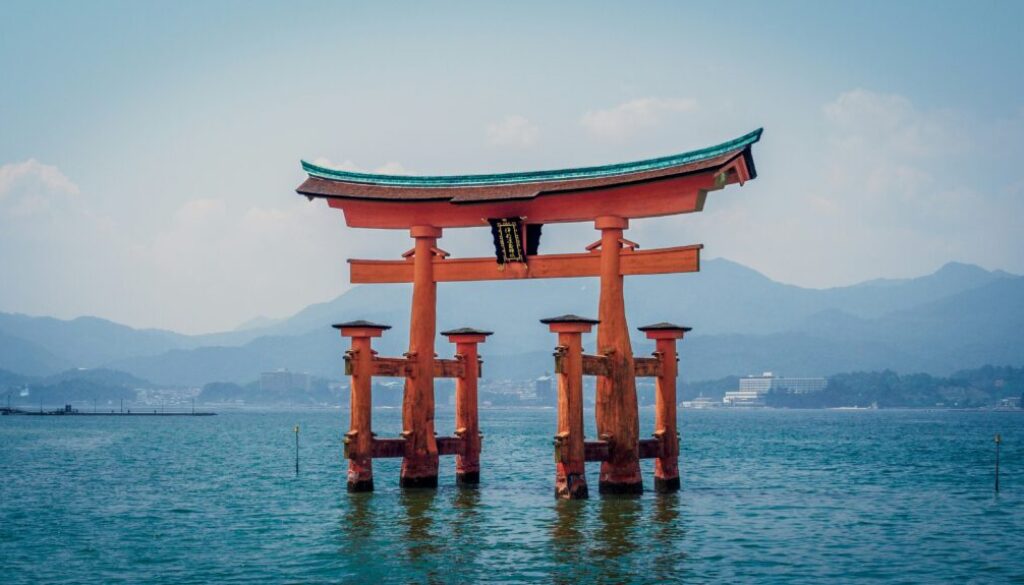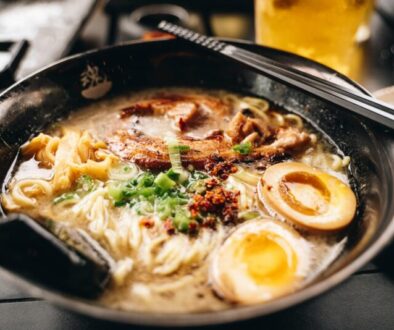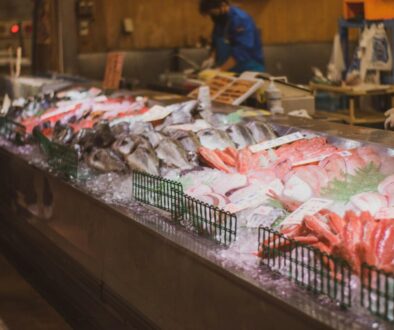Nestled just off the coast of Hiroshima, Miyajima is one of Japan’s most enchanting destinations. Easily accessible by a short ferry ride from Hiroshima, the island is famous for its iconic “floating” torii gate and serene island atmosphere, Miyajima effortlessly blends breathtaking scenery, ancient spiritual sites, and a vibrant food culture.
From wandering historic shrines and meeting friendly local deer to sampling fresh oysters and hiking to panoramic mountain views, Miyajima offers a perfect blend of adventure and tradition.
In this guide, we’ll cover the best things to do on Miyajima, essential travel tips, and recommendations to help you plan a memorable day trip or overnight stay from Hiroshima. Get ready to discover why Miyajima is a must-visit on every Japan travel itinerary!
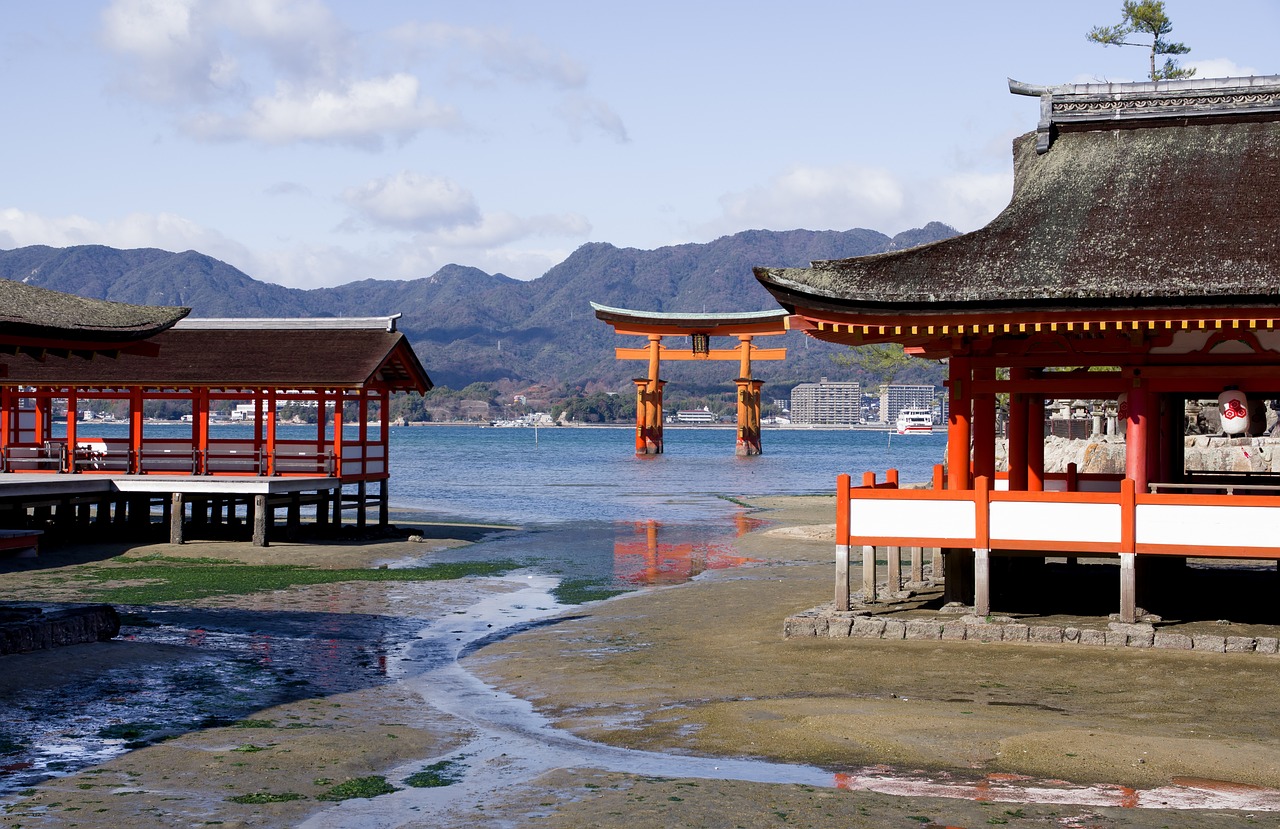
Explore Itsukushima Shrine Marvel at the Floating Torii Gate
Rising above the shimmering waters of Miyajima, Itsukushima Shrine and its iconic floating torii gate capture the very spirit of the island. As the most recognized landmark in Hiroshima Prefecture, this centuries-old shrine draws travelers from around the world with its blend of natural beauty, spiritual significance, and architectural elegance.
Whether you’re visiting for breathtaking photos, a glimpse into Japan’s sacred traditions, or simply to soak in the tranquil atmosphere, exploring Itsukushima Shrine is an essential experience that sets the tone for your entire Miyajima adventure.
The shrine’s most famous feature is its striking vermilion torii gate, which appears to float gracefully on the Seto Inland Sea at high tide. It is a scene that has inspired Japanese travelers, writers, and artists for centuries.
UNESCO World Heritage Status & History
Designated a UNESCO World Heritage site in 1996, Itsukushima Shrine dates back to the 12th century. It is celebrated as one of Japan’s most picturesque and culturally significant shrines. Built over the water on a series of elegant wooden piers, the shrine was designed so that worshippers could approach by boat, keeping the sacred island “pure.” Its vivid color, harmonious architecture, and mountain backdrop have made it a symbol of Shinto spirituality and Japanese aesthetics.
Itsukushima Shrine is dedicated to three Shinto deities of sea and storms, and it has long been a place of prayer for safe voyages and prosperity.
As you wander the walkways suspended above the tidal flats, take time to observe the shrine’s graceful design, tranquil setting, and the subtle sound of the waves beneath your feet. Seasonal festivals, such as the dramatic Kangen-sai music festival in summer, offer an immersive way to experience the living traditions of this sacred site.
Want to learn more about Itsukushima Shrine? Visit their official website HERE.
Best Photo Spots & When to Visit
To capture the legendary “floating” effect, plan your visit during high tide, when the base of the torii is submerged and reflected beautifully in the water. For a completely different perspective, visit at low tide, when you can walk right up to the massive gate and admire its craftsmanship up close. Some of the best viewpoints are from the shrine’s main boardwalks, the shoreline path near the ferry terminal, and the elevated paths near Senjokaku Pavilion. Each of these locations offers unique angles for photography throughout the day.
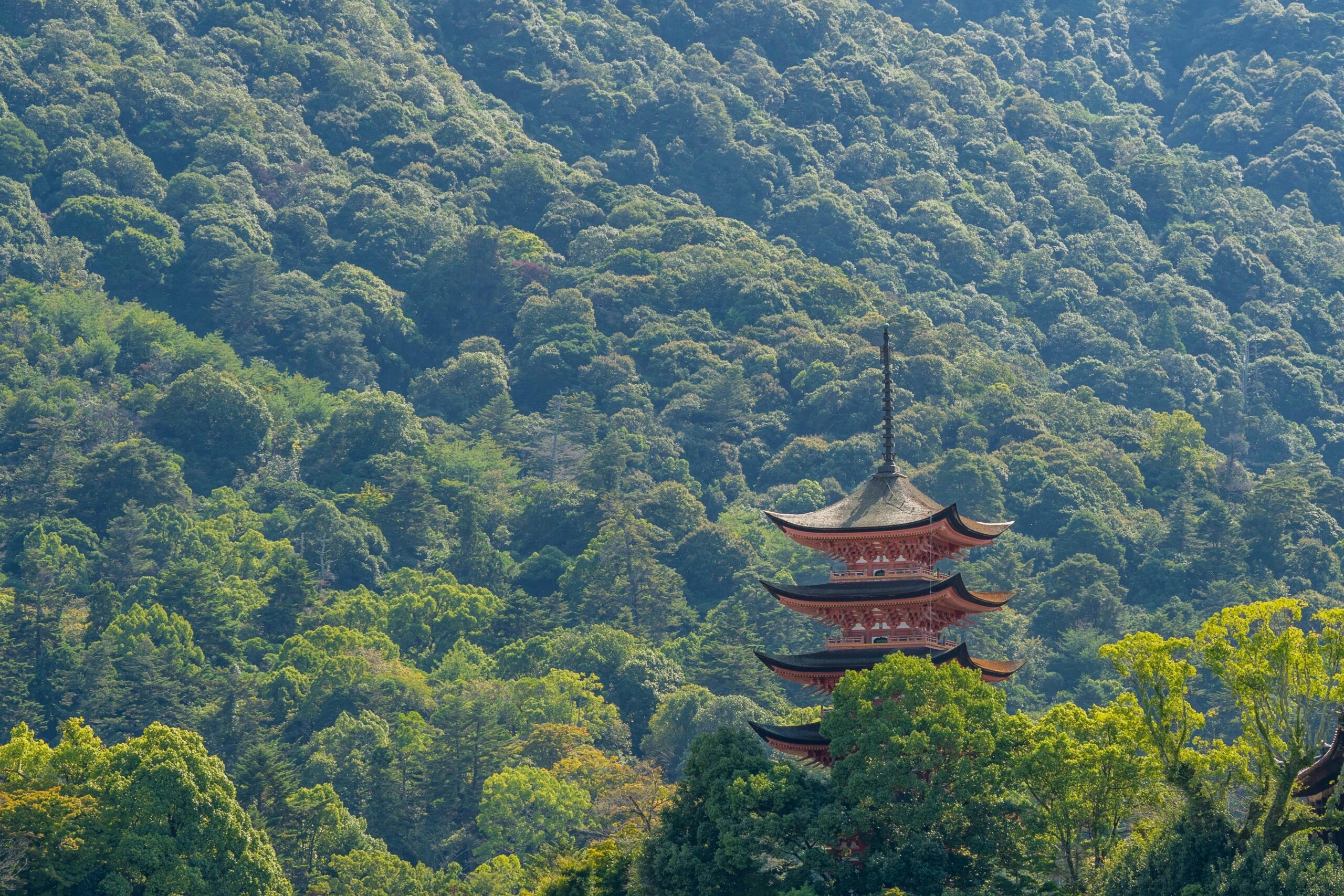
Hike Mount Misen and Visit Daisho-in Temple
For those seeking both natural beauty and spiritual discovery, a hike up Mount Misen is one of Miyajima’s most rewarding adventures. Rising 535 meters above sea level, Mount Misen is the island’s highest peak and a sacred site steeped in centuries of Buddhist tradition.
Along the way, the serene presence of ancient temples, moss-covered statues, and lush forest trails offers a profound sense of tranquility and wonder.
Daisho-in Temple: History and Highlights
At the foot of Mount Misen lies Daisho-in, one of the most important Buddhist temples in western Japan. Founded in 806 by the legendary monk Kobo Daishi, Daisho-in is renowned for its peaceful atmosphere, ornate halls, and unique spiritual touches.
Don’t miss the rows of whimsical rakan statues (representing Buddha’s disciples) that line the paths. Each of these has a distinct expression and knitted hat! The temple’s prayer wheels, intricate mandalas, and hilltop lanterns invite quiet reflection before you begin your ascent.
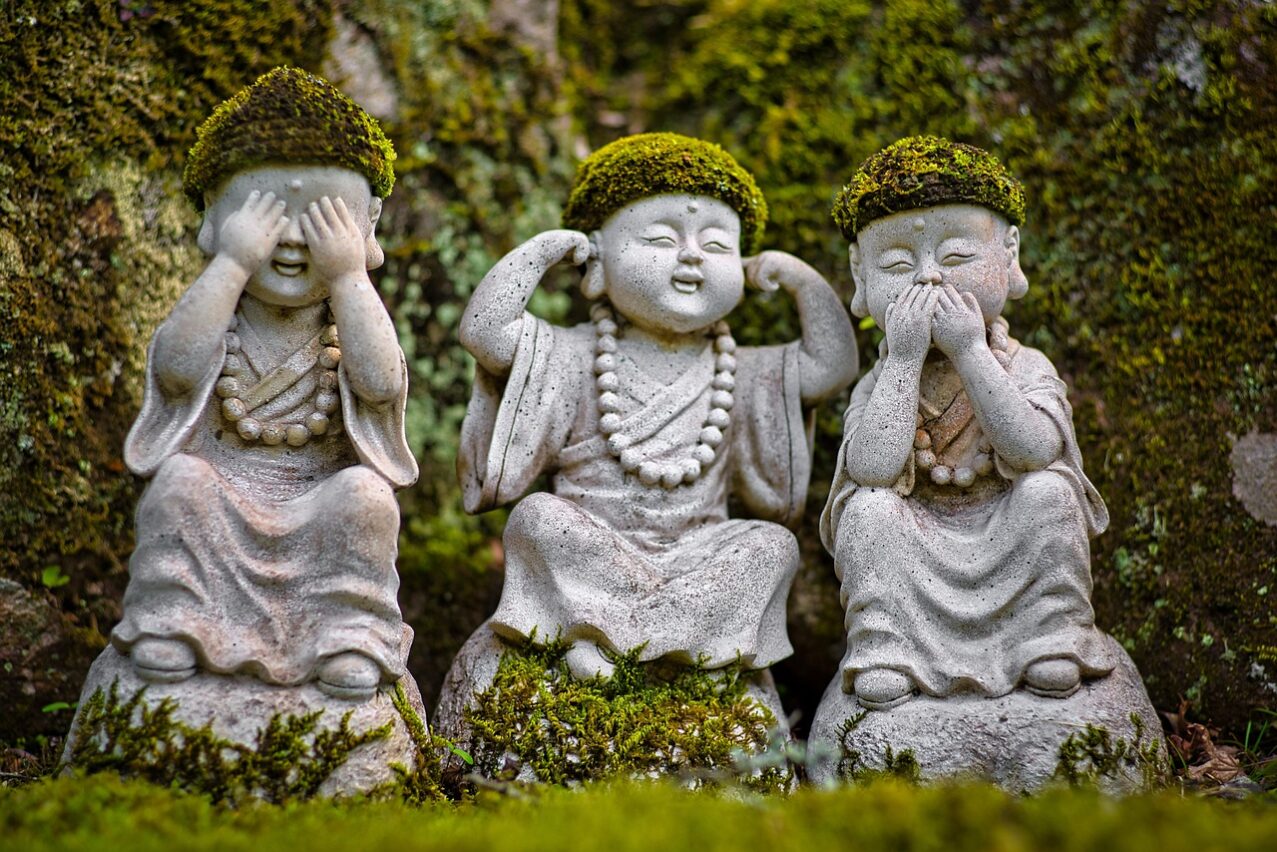
Choosing Your Trail: Momijidani, Daisho-in, or Ropeway
There are three main ways to reach Mount Misen’s summit, each offering a different experience.
The Momijidani Trail winds through maple-filled valleys, especially vibrant in autumn.
The Daisho-in Trail is perhaps the most spiritual, passing shrines, statues, and ancient stone steps.
For those who prefer a more leisurely journey, the Miyajima Ropeway offers stunning aerial views and a short hike from the upper station to the peak.
Whichever route you choose, you’ll encounter sacred sites and hidden corners of beauty along the way.
Panoramic Views and Sacred Sites
Reaching the summit of Mount Misen rewards hikers with breathtaking 360-degree views of the Seto Inland Sea, distant islands, and (on a clear day) the mountains of mainland Hiroshima.
The summit area is dotted with spiritual sites, including the Reikado Hall, which houses the “eternal flame” said to have been burning for 1,200 years. It’s a fitting symbol for the mountain’s enduring significance as both a pilgrimage destination and a place of deep natural harmony.
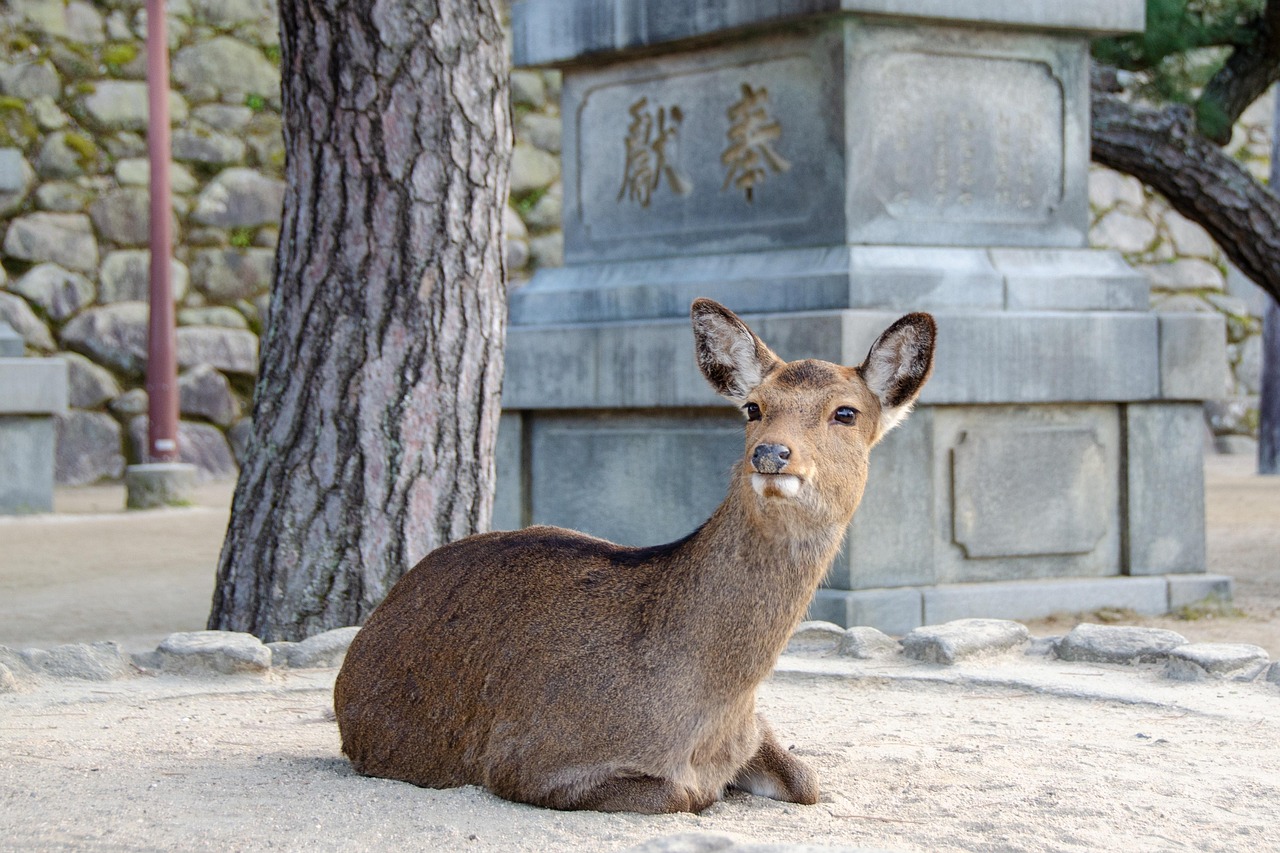
Meet Miyajima’s Friendly Deer
One of Miyajima’s most delightful surprises is its population of free-roaming, friendly deer. These gentle creatures have become beloved island mascots, often greeting visitors around Itsukushima Shrine, along the waterfront, and even on the shopping streets.
Much like their famous cousins in Nara, Miyajima’s deer are accustomed to human presence and can make for memorable travel moments and photos.
Tips for Interacting with the Deer
While it’s tempting to approach and feed the deer, it’s important to remember that they are wild animals. Treat them with respect, admire from a short distance, let them come to you, and avoid sudden movements that might startle them. Many deer are curious and may nuzzle bags or pockets, searching for food.
Dos and Don’ts for Visitors
- Do:
- Do enjoy watching and photographing the deer in natural settings
- Do keep an eye on your belongings. Deer can be playful and sometimes mischievous!
- Do supervise children around the deer, and use gentle voices
- Do enjoy watching and photographing the deer in natural settings
- Don’t:
- Do not feed the deer (feeding the deer is not allowed on Miyajima)
- Do not tease, chase, or attempt to ride the deer
- Do not litter. Discarded wrappers can be dangerous for the deer and other animals
- Do not feed the deer (feeding the deer is not allowed on Miyajima)
By treating Miyajima’s deer with kindness and care, you’ll help preserve the island’s unique atmosphere and ensure these gentle residents remain a joy for future travelers.
Stroll Through Omotesando Shopping Street
No visit to Miyajima is complete without a leisurely stroll down Omotesando Shopping Street. This small shopping street is the vibrant heart of the island’s local life.
The bustling pedestrian avenue is lined with colorful shops, family-run stalls, and centuries-old storefronts selling a tempting array of traditional snacks, unique souvenirs, and artisanal crafts.
Local Souvenirs and Traditional Crafts
Omotesando Street is the perfect place to pick up a memorable Miyajima keepsake. You’ll find everything from hand-carved rice scoops (shamoji), lacquerware, and delicate paper goods to charming deer-themed trinkets. Some stores even offer demonstrations, giving you a behind-the-scenes glimpse at local craftsmanship and allowing you to support the island’s makers.
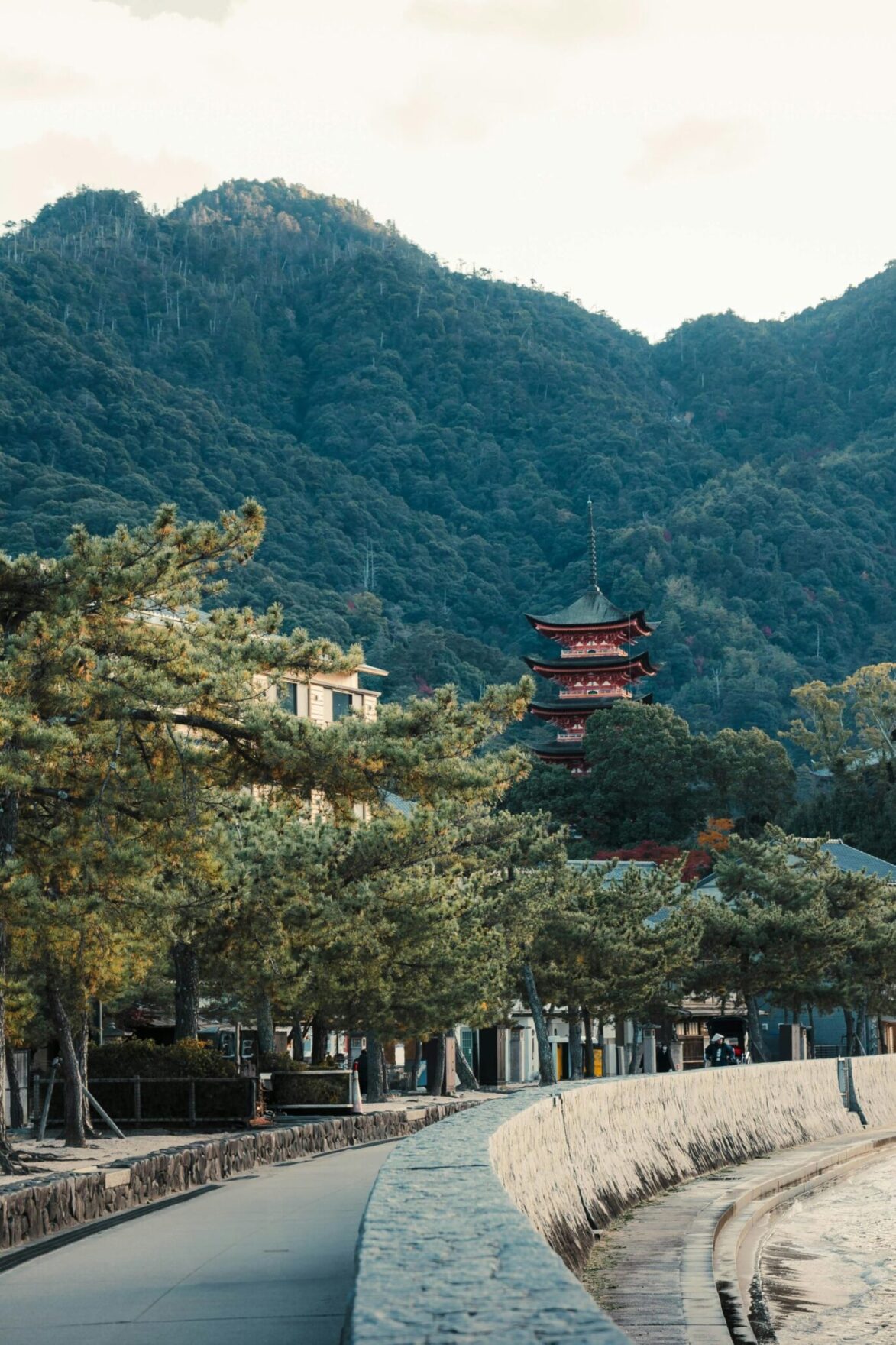
Must-Try Snack: Momiji Manju
Of all the treats on Omotesando Street, none is more iconic than momiji manju. They are soft, maple leaf-shaped cakes traditionally filled with sweet red bean paste. Baked fresh throughout the day, these bite-sized delights come in classic and creative flavors, including matcha, chocolate, and custard.
A local favorite for Momiji Manju is Kikkawa Nanaurado, where one manju is only 100 yen! Delicious and cheap, you’ll have trouble getting just one!
Whether you’re searching for a souvenir or simply soaking up the lively island atmosphere, Omotesando Shopping Street is a highlight of any Miyajima visit.
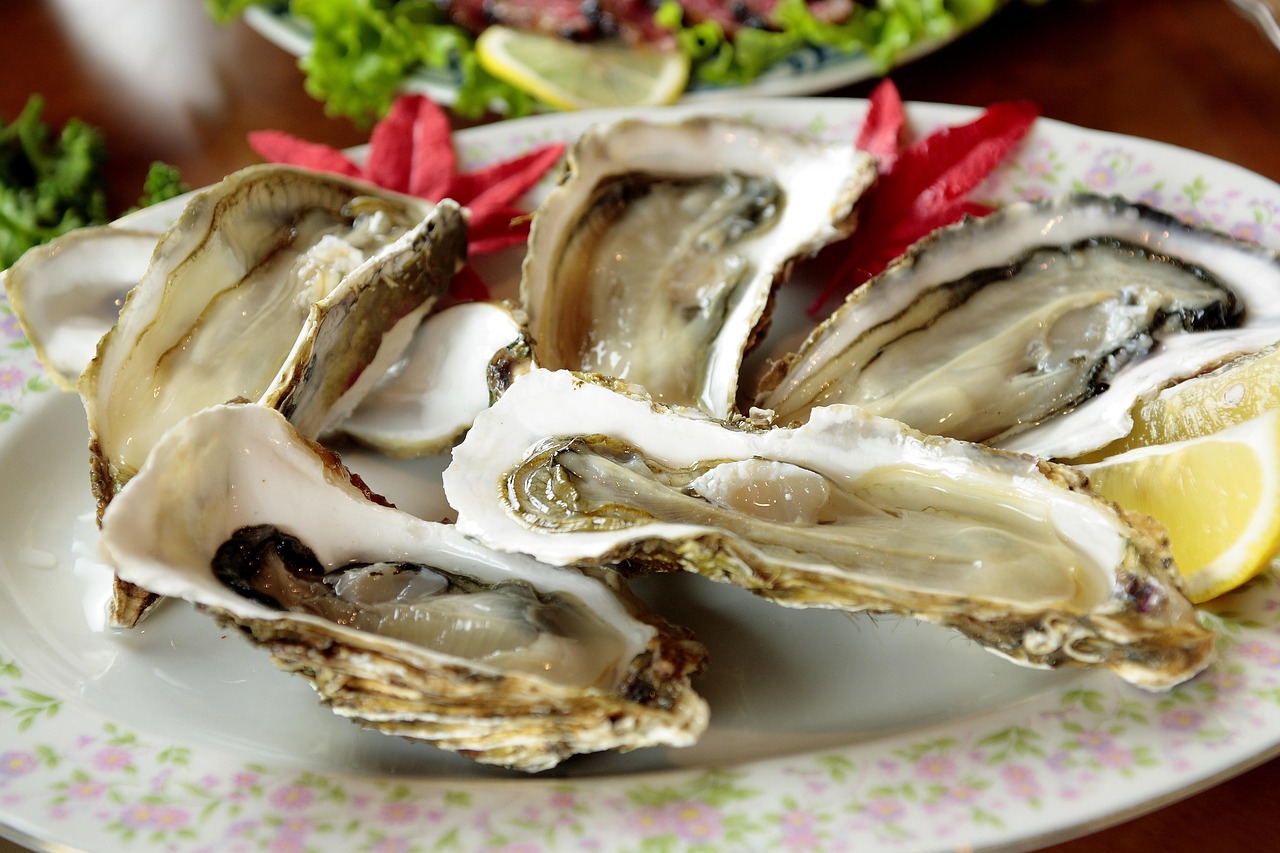
Try Miyajima’s Famous Food
Miyajima is a paradise for food lovers, offering a rich blend of fresh seafood and distinctive island specialties you won’t want to miss. The island’s vibrant food scene reflects both its coastal heritage and deep-rooted culinary traditions, making every meal a memorable part of your visit.
Oysters: Grilled and Fresh
Miyajima is especially renowned for its plump, juicy oysters, some of the best in Japan. From autumn through spring, street-side stalls and local restaurants serve oysters in every style imaginable: grilled over charcoal, served raw on the half shell, steamed in their own juices, or even deep-fried for extra crunch. Try them freshly shucked with just a squeeze of lemon, or savor them grilled and topped with savory sauces.
For a classic Miyajima oyster experience, visit local favorite Kakiya.
Another local favorite is Yakigaki-no-Hayashi. Visit their official website HERE.
Anago-meshi (Conger Eel Rice)
Another unmissable Miyajima specialty is anago-meshi, which is tender, flavorful conger eel (anago) glazed with a sweet-savory sauce and served over a bowl of fluffy rice.
Unlike unagi (freshwater eel), anago has a delicate, subtle taste and is typically steamed or grilled to perfection. The dish is both comforting and elegant, best enjoyed at long-established eateries.
One famous restaurant is Ueno, said to be the birthplace of anago-meshi. Visit it HERE.
Sampling Miyajima’s famous foods is not just about satisfying your hunger. It’s a delicious way to experience the island’s history, hospitality, and unique coastal charm.
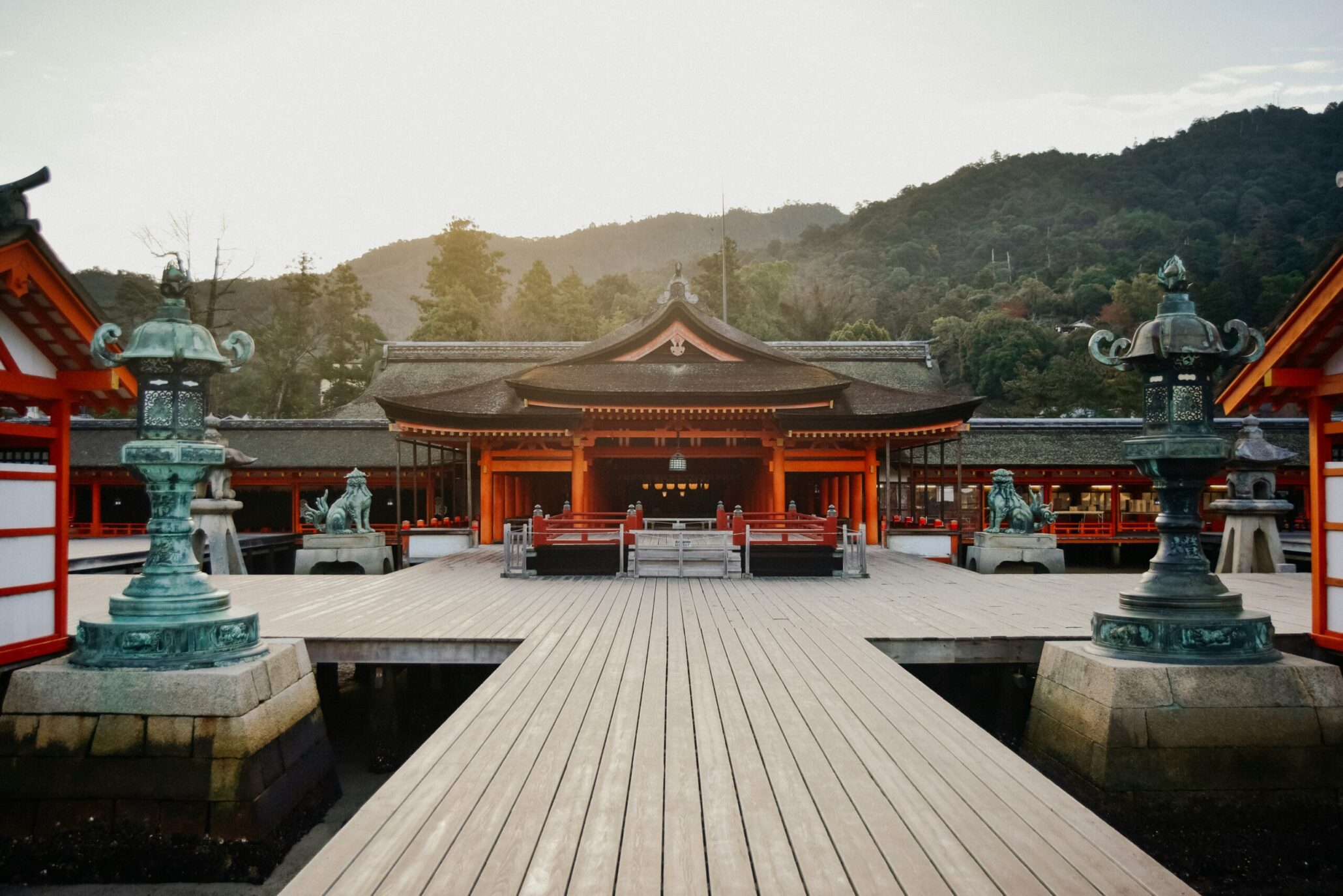
Stay Overnight in a Ryokan
While many visitors experience Miyajima as a day trip, staying overnight in a traditional Japanese ryokan transforms your visit into something truly special. As evening falls and the crowds depart, the island reveals a quieter, almost mystical side. This makes it the perfect time to unwind and soak up Miyajima’s tranquil atmosphere.
The Benefits of Staying Overnight
By spending the night on Miyajima, you’ll have the rare opportunity to explore the island’s iconic sites in the peaceful early morning or after dusk, when the illuminated torii gate glows softly over the water. Ryokan stays include authentic Japanese hospitality, beautifully prepared kaiseki meals, and a chance to enjoy local onsen (hot springs) baths. The slower pace allows for deeper relaxation, more time to wander scenic paths, and unique cultural encounters you simply can’t get on a quick day trip.
Here are some of our recommended places to stay at:
Miyajima Seaside Hotel
Peaceful Japanese-style ryokan with delicious dinner served in your room and a beautiful seaside view.
Kikunoya Miyajima
Beautiful modern ryokan featuring breathtaking views of Itsukushima Shrine’s torii gate, delicious dinners, and fun cultural experiences guests can participate in.
Miyajima Grand Hotel Arimoto
Luxurious Hotel offering both western-style rooms and traditional Japanese-style rooms. With rooms featuring private hot springs and delicious meals, this is the top-tier experience.
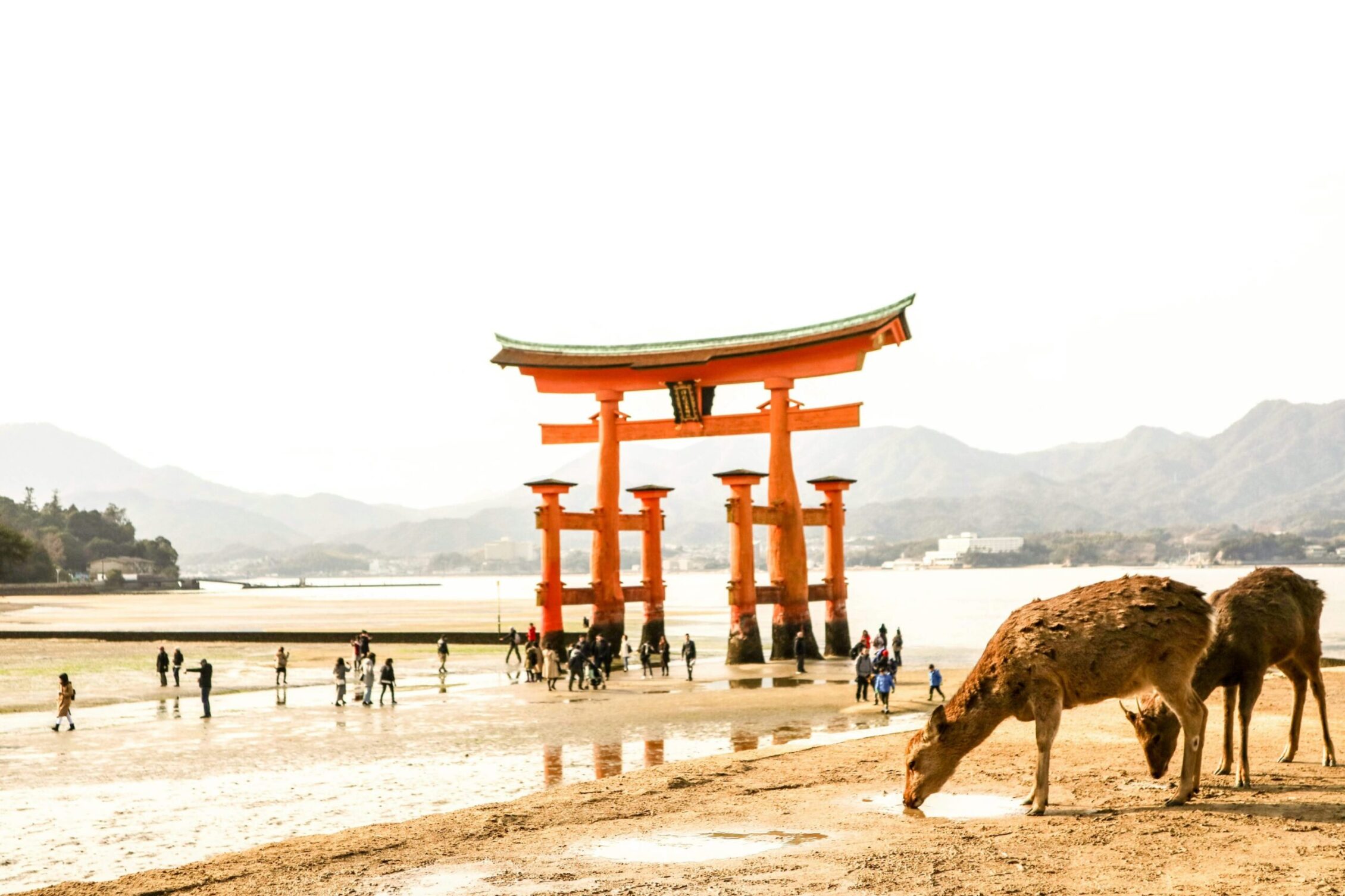
Travel Tips for Visiting Miyajima
A little planning goes a long way when visiting Miyajima, ensuring you get the most out of your trip and experience the island at its best. Here are key tips to help you plan, travel, and make the most of your time in this unforgettable destination.
How to get to Miyajima from Hiroshima
Miyajima is easily accessed from Hiroshima via a short train and ferry journey. Take the JR Sanyo Line to Miyajimaguchi Station (about 30 minutes), then walk a few minutes to the ferry terminal. The JR ferry and Matsudai ferry both make the 10-minute crossing to Miyajima’s main pier, and the JR ferry is included in the Japan Rail Pass.
Visit the official JR Miyajima ferry website HERE for more information.
Miyajima Ferry Information and Access
Ferries run frequently throughout the day, and you don’t need to book tickets in advance. The ride offers scenic views of the island and the floating torii gate. Make sure to sit on the right side for the best photos as you approach. Luggage storage is available at the ferry terminal and on the island, making day trips and overnight stays easy.
When to Visit: Seasons and Festivals
Miyajima is beautiful year-round, but certain times offer extra magic. Visit in spring for cherry blossoms around the shrine and along the walking paths, or in autumn when fiery maple leaves color the landscape, which are especially stunning along Momijidani Park. Summer brings lively festivals such as the spectacular Kangensai (music festival) and fireworks displays, while winter offers a quieter, more contemplative island vibe with fresh oyster season at its peak.
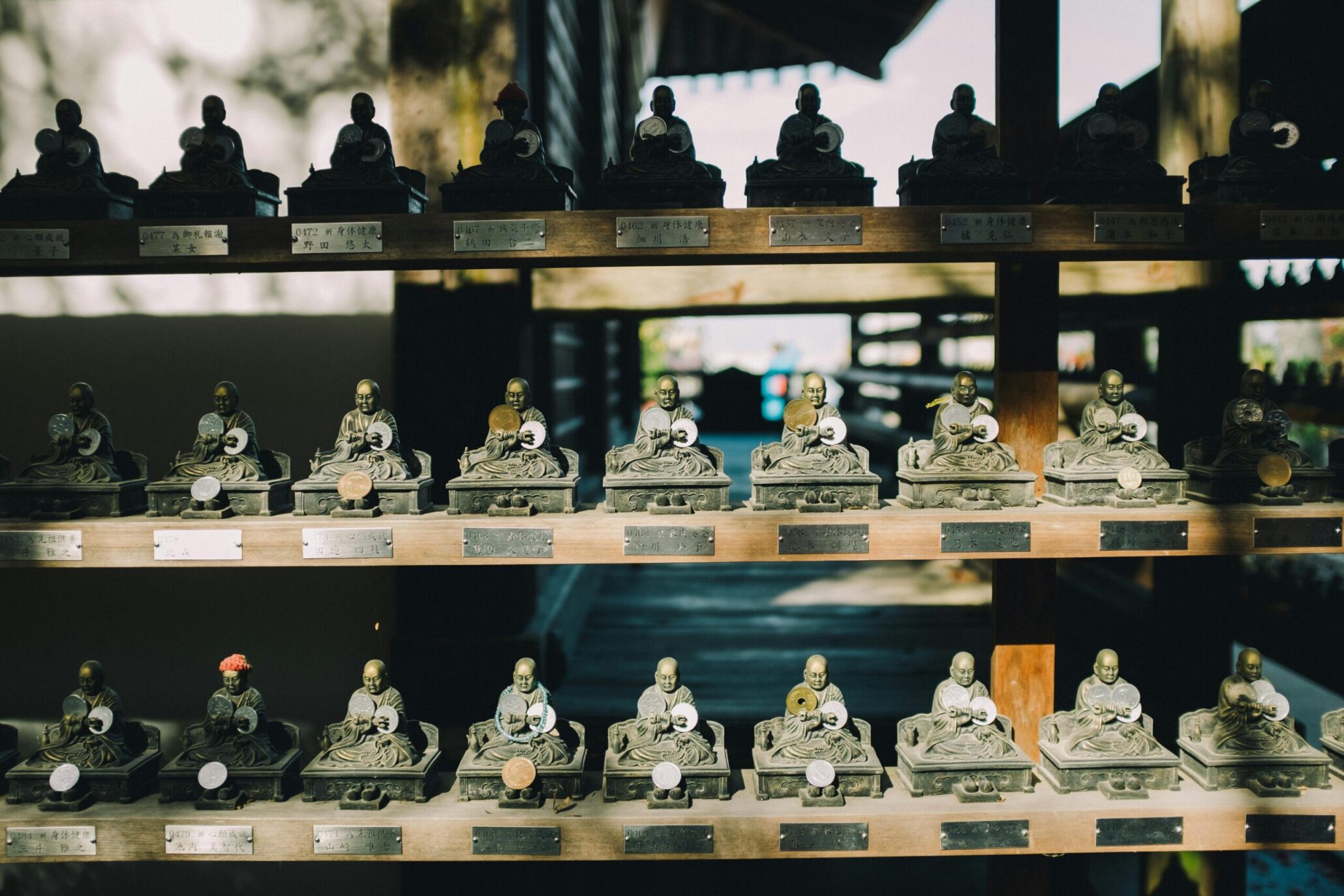
Frequently Asked Questions
Is Miyajima worth visiting on a day trip?
Yes! Miyajima is one of Japan’s most beautiful and accessible destinations, making it an excellent day trip from Hiroshima. Even with a half day, you can visit the famous Itsukushima Shrine, stroll through the lively shopping street, and sample local foods. However, staying overnight offers a quieter, more immersive experience.
Can you walk to the torii gate at low tide?
Yes, during low tide you can walk out across the sandy seabed to get up close to the iconic floating torii gate. It’s a unique photo opportunity and lets you appreciate the gate’s impressive size and craftsmanship. Remember, at high tide, the gate is surrounded by water and best viewed from a distance.
Want to know when exactly low tide and high tide will be? Take a look at websites that track tide times, such as tidetime.org!
Are there any luggage storage options on the island?
Yes, Miyajima offers several convenient luggage storage options. You’ll find coin lockers at the ferry terminal and near the main shopping street, as well as baggage storage counters at some hotels and ryokans. This makes it easy to explore the island hands-free, whether you’re on a day trip or staying overnight.
How much time should you spend on Miyajima?
For most visitors, a half-day to full-day is ideal to see the major sights, enjoy local food, and soak up the island’s atmosphere. If you want to hike Mount Misen, visit multiple temples, and experience the peaceful evenings after the crowds leave, consider staying overnight at a ryokan for the full Miyajima experience.
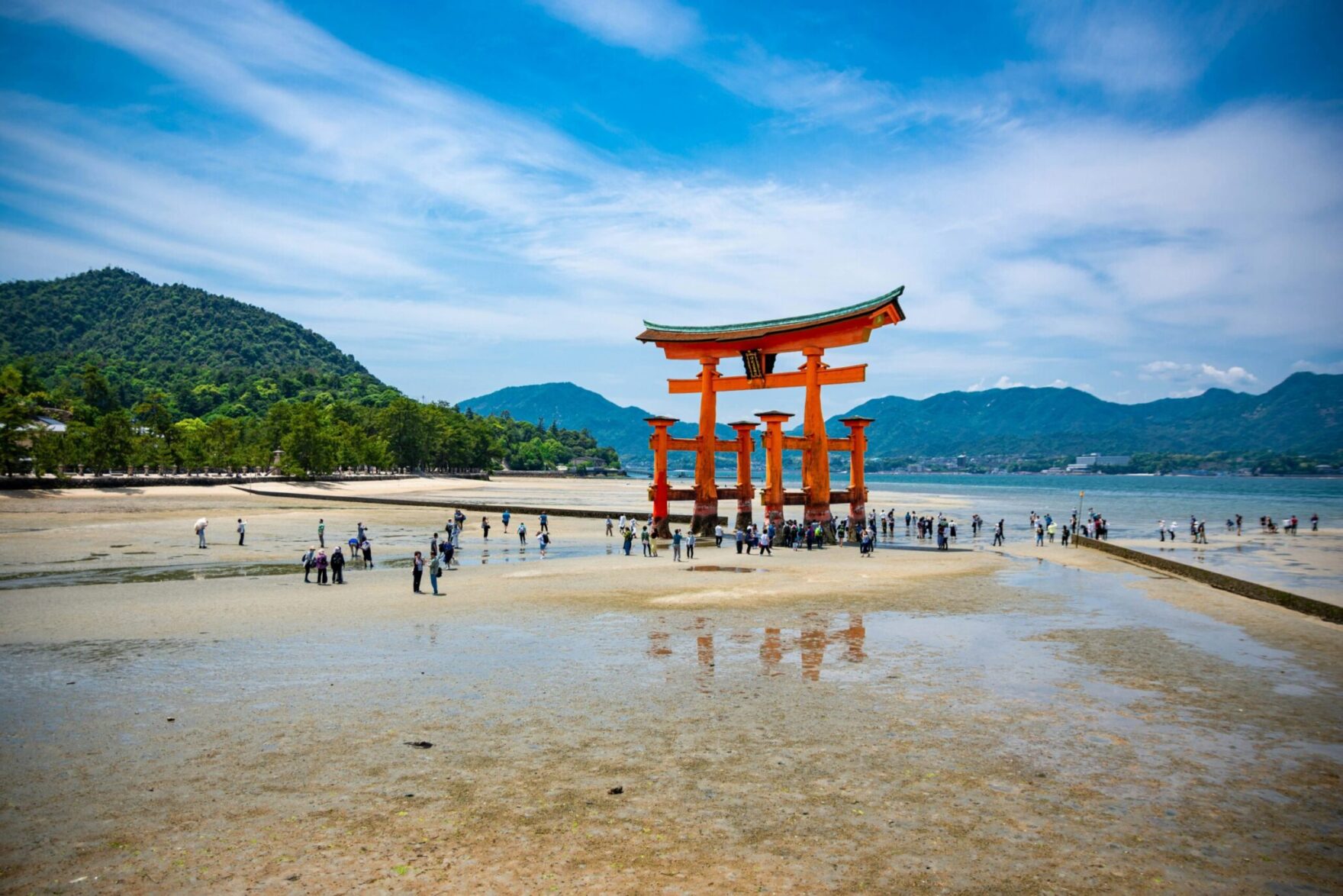
Miyajima Island truly lives up to its reputation as one of Japan’s most captivating destinations. With its iconic floating torii gate, historic shrines, lush mountain trails, and welcoming local deer, every corner of the island offers a unique blend of spiritual heritage and natural beauty. Whether you’re savoring fresh oysters by the waterfront, shopping for traditional souvenirs on Omotesando Street, or enjoying a peaceful night in a ryokan, Miyajima promises an unforgettable travel experience that highlights the best of Hiroshima’s culture and scenery.
No matter the season, Miyajima rewards visitors with spectacular views, delicious cuisine, and opportunities for adventure and relaxation. Whether you’re planning a day trip from Hiroshima or staying overnight to soak up the island’s tranquil atmosphere, this guide will help you make the most of your visit.
Discover why Miyajima remains a must-see on every Japan itinerary, and let its timeless charm and rich traditions leave a lasting impression on your journey.
Interested in learning about incredible sightseeing locations across Kyoto? Make sure to check out our other blog posts, such as our guide to the Nishiki Market, the history of Fushimi Inari, and an itinerary for 3 full days in Kyoto.
We also run food tours in Kyoto, Tokyo, and Osaka, so be sure to put those on your itinerary when you come to Japan!

